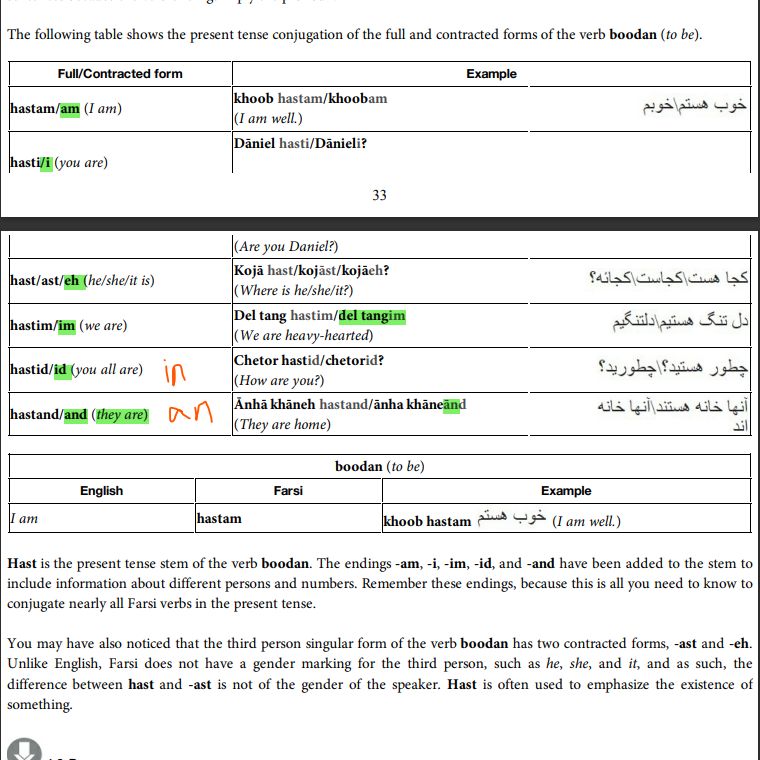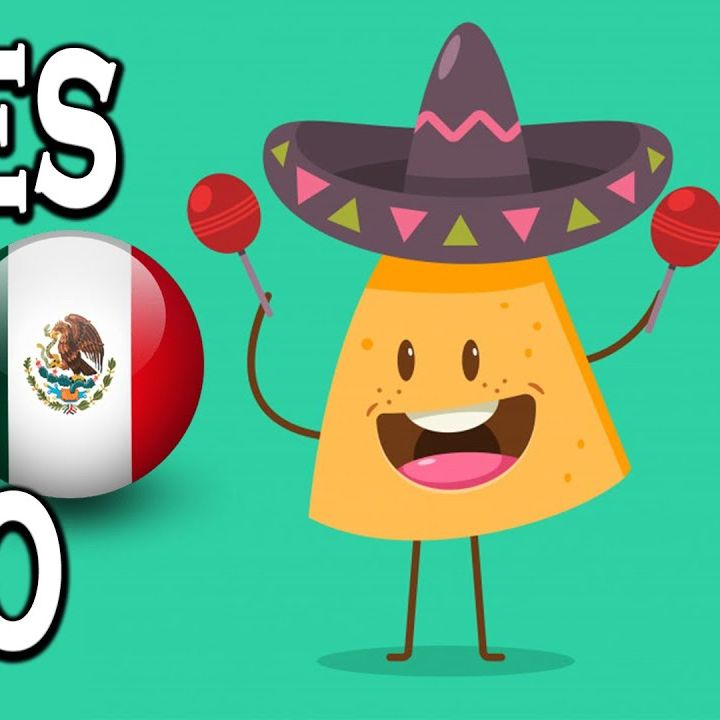
The verb (to be) boodan = بودن
說明
Grammar Point: The verb (to be) boodan
While reading the Conversation, you might have wondered why the counterpart of the English verb “is” in Farsi (ast )
had different forms in different places. For instance, when Nasrin introduced her husband to her mom, she said, In
Dānieleh (This is Daniel). In another place, Nasrin asked her mom, Farzād kojāst? (Where is
Farzad?).
Like English, Farsi also uses both full and contracted forms of the verb to be. In English, we can say, “I am happy,” “Jane is
beautiful,” and “You are smart,” or we can contract the verb and say, “I’m happy,” “Jane’s beautiful,” and “You’re smart.” In
the same way, Nasrin used contracted forms of the be-verb.
Like most Indo-European languages, Farsi verbs are conjugated. Conjugation means that speakers attach endings to verbs
that provide information about the person, number, and tense of a verb. In Farsi, very often pronouns are omitted from
sentences because the verb endings imply the pronoun.
more examples:
مُعَلِّمَم=معلمم moallemam = moallem hastam = I'm a teacher.
دُکتُری= دکتری؟ Doctori? = Doctor hasti? = are you a doctor?
تاجِره= تاجره Tajere = Tajer hast = he's/she's a business(wo)man.
خُوشحالیم = خوشحالیم khosh'halim =khosh'hal hastim= we're happy.
ناراحَتین؟= ناراحتین narahatin? = narahat hastin? = are you unhappy?
تو راهَن؟= تو راهن؟ tu rahan? = tu rah hastan? = are they on the way?
Podcast 頻道
Farsi (Persian) pods
創作者

